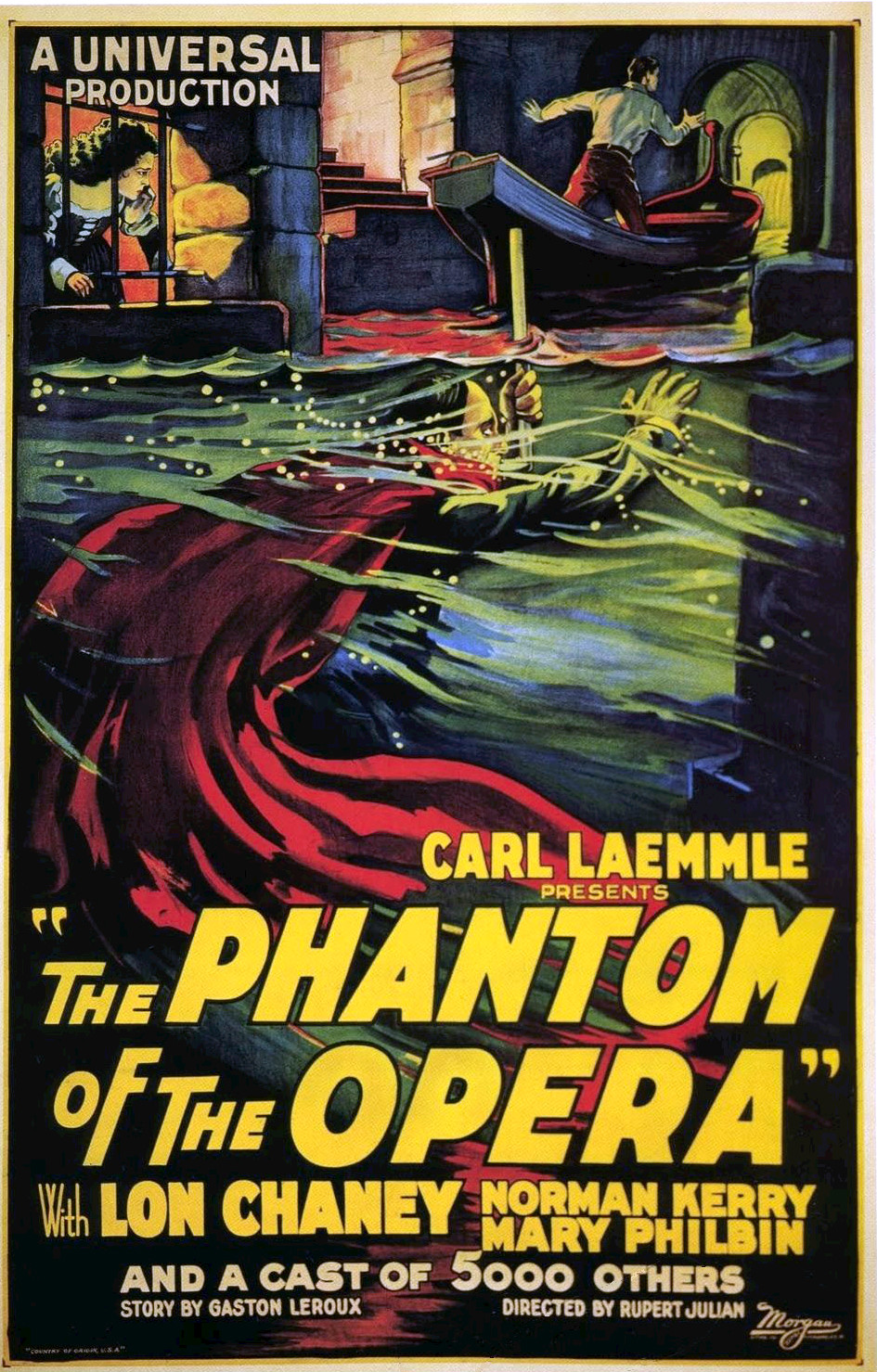It’s the day before All Hallow’s Eve and the Howard Assembly Room has already entered into the spirit of the occasion. The foyer of this delightful performance venue deep in the heart of Leeds is playing host to an array of Halloween-themed crafts and during the afternoon the HAR is showing a double bill of family-friendly, spooky short films. Once darkness has fallen, though, it is time to screen the 1925 silent horror film classic, The Phantom of the Opera, complete with a live accompaniment by the Leeds City Organist, Darius Battiwalla.
This is the first, and many would argue still the best adaptation of the French author Gaston Leroux’s novel, Le Fantôme de l’Opéra. Inspired in part by historical events at the Paris Opera during the nineteenth century, and by an apocryphal tale concerning the use of a former ballet pupil’s skeleton in Carl Von Weber’s 1841 production of the German opera, Der Freischütz, the novel’s primary essence is perhaps distilled from the ancient fairy tale, Beauty and the Beast. And the film – directed by Rupert Julian and starring Lon Chaney in the title role – takes these central elements, draws upon the undeniable influence of Victor Hugo’s The Hunchback of Notre Dame, and then puts them all together before presenting the grand redesign as a sinister, often surreal gothic melodrama.
Erik (Lon Chaney) is a grotesque, facially-disfigured, tortured spectre haunting the catacombs beneath the Paris Opera House. He wreaks havoc and revenge in order to try and orchestrate a romance with the building’s beautiful ingénue Christine Daaé (Mary Philbin), with whom he has become maniacally obsessed. Wanting Christine only for himself, the Phantom then essentially kidnaps her before taking her down into his subterranean world. It is a tragic, foreboding tale of desire, control, dangerous infatuation, unrequited love, renunciation, betrayal, and fearful vengeance.
The Phantom of the Opera is shot in black and white, save for the masked ball scene which was coloured by hand, frame-by-frame, using the Handschiegl process. The addition of this predominantly lurid red colouring heightens the dramatic effect of the film, already towering from the impact of the spectacular, expressionist sets. But the star of the film is Lon Chaney. He devised, and self-applied, the hideous make-up and prosthetics that rendered him unrecognisable. Immersing himself completely in the role of Erik, Chaney manages to bring a level of humanity, a sense of self-sacrifice, and even a little sympathy, to an otherwise malevolent, twisted individual.
And bringing a further dimension to this particular screening of The Phantom of the Opera is Darius Battiwalla. Sat discreetly to the left of the screen and beginning on the piano before turning to the organ – at the precise moment that Erik first plays that instrument in the film – Battiwalla assumes the role of translator. His fluid, interpretive playing reflects subtle onscreen shifts in mood and plot as he fuses a wonderful interaction between the film, musician, and audience.




